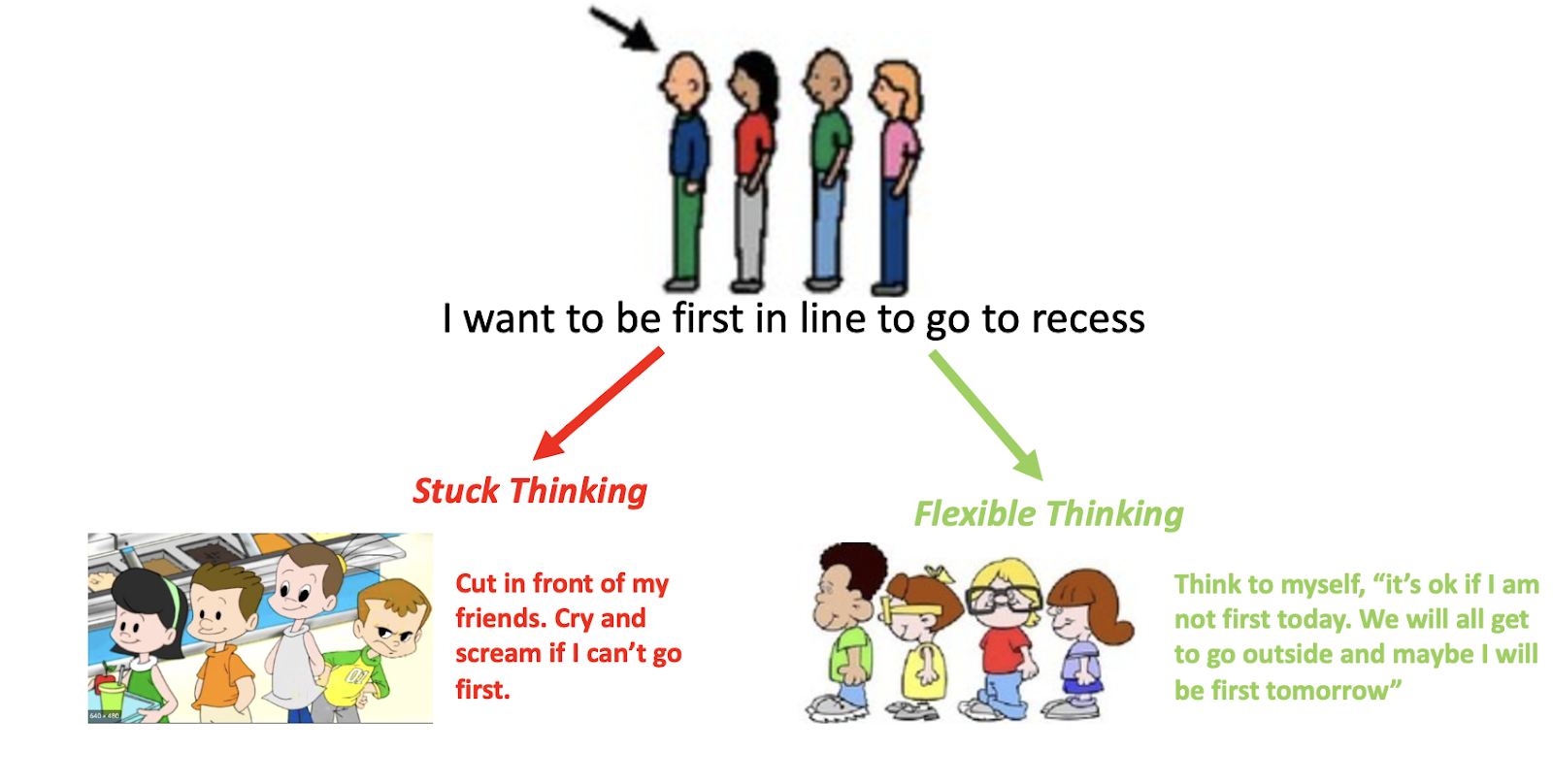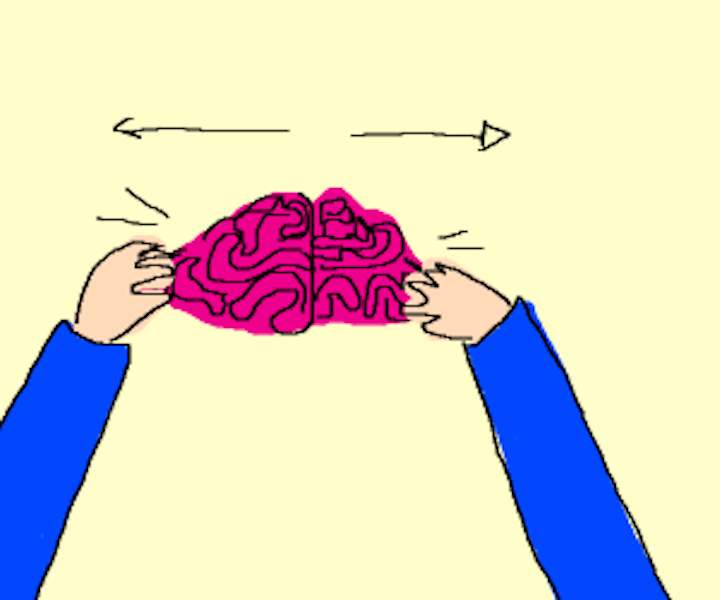For a lesson plan on teaching flexible thinking, check out my guest post on The Dabbling Speechie’s website. For more resources, keep on reading!
Using Books
If you are an SLP or other educator that is lucky to have access to the Social Thinking curriculum, there are some incredible books on this topic. Book #3 in We Thinkers Volume 2 (which should be read after We Thinkers Volume 1 and Books #1 and #2 of Volume 2) is called Flexible and Stuck Thinking. This story book teaches children about being stuck vs. flexible thinkers by comparing stuck thoughts to actually being physically stuck. For example, when the students can’t agree on which direction to drive, all of their brains appear to be physically stuck and then their car gets stuck too.
Superflex Takes on Rock Brain And the Team of Unthinkables, another book from the Social Thinking series, teaches children all about using their “superflex skills” to defeat their “team of unthinkables” that sometimes take over their brain and reduce their flexible thinking skills.
If you don’t have access to Social Thinking materials, here are some other fantastic books that help to teach the concept of flexible thinking:
- Not Norman by Kelly Bennett
- Pete the Cat I Love My White Shoes by Eric Litwin
- My Day is Ruined!: A Story For Teaching Flexible Thinking by Bryan Smith
- Marigold Bakes A Cake by Mike Malbrough
- Bread and Jam for Frances by Russell Hoban
- Beautiful Oops by Barney Saltzberg
- Yard Sale by Eve Bunting
- One Word from Sophia by Jim Averbeck
- I Just Don’t Like the Sound of No by Julia Cook
- Saturday by Oge Mora
A concept that many of these books have in common is that sometimes, we don’t want to try new things if they don’t follow our original plan. However, if we are flexible and try new things, we might end up even liking it.
Using Videos
I like to use kid-friendly videos that demonstrate what it looks like to not be a flexible thinker and then brainstorm with my clients what the person in the video could do differently next time. I also try to focus on how other people feel around the “stuck thinker.” What are peoples’ thoughts and feelings when someone is not being very flexible? Do people feel happy or sad or mad? Do they feel uncomfortable or comfortable? Do they want to be around this person or avoid them? Is it fun or not fun to play with someone who is always a stuck thinker?
Are the people on the escalator being flexible or stuck thinkers? How do you know? What could they do to quickly solve their problem?
Is the boy a flexible or stuck thinker? How is it making his mom feel?
Is the dog being flexible or stuck? What happens when he keeps trying to go out the same way? What happens when he changes his plan?
Is Veruca Salt being a flexible or stuck thinker? How do others around her feel? What would be a more expected and flexible reaction to being told no?
This video demonstrates flexible thinking. I ask my clients “Is the boy a flexible or stuck thinker? How do you know?”
Using Real Life Examples
Once my clients have a solid understanding of this concept, I like to bring in real life examples that they have told me or that have been shared by parents or teachers. Together with the client, we come up with an example and find a visual for it on Google. We then write a flexible reaction and a stuck reaction and discuss them.

Talking to Parents
Finally, I talk to parents about using this vocabulary at home. That does not necessarily mean saying, “are you being a flexible thinker?” when the child is, in fact, being quite stuck. Instead, I have parents talk to their children after the stuck thinking has occurred to help them reflect. For example, saying to children, “When it was raining and we could not go to the park, do you think you were being a flexible thinker or a stuck thinker? How do you think that made mommy/daddy feel? What could we do differently next time?” is a great way to encourage a child to think about their behaviour. I also ensure that parents praise their children when they are being flexible thinkers so that they can become more aware of their successes, even when they may be quite small. For example, “You ate your yogurt today when you didn’t want it in your lunch! That was so flexible of you to try it anyway!”
Working on the concept of being a flexible thinker can be so helpful for our clients.
I would love to hear how you work on this with your clients or if you try any of these tips and tricks.
